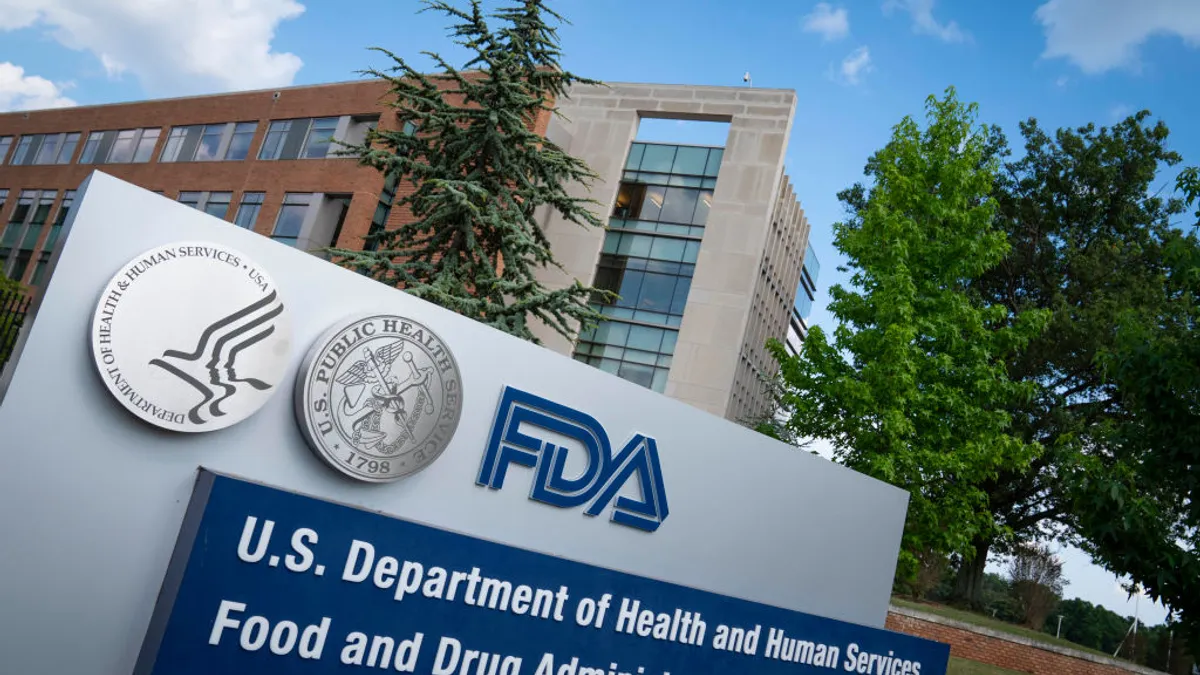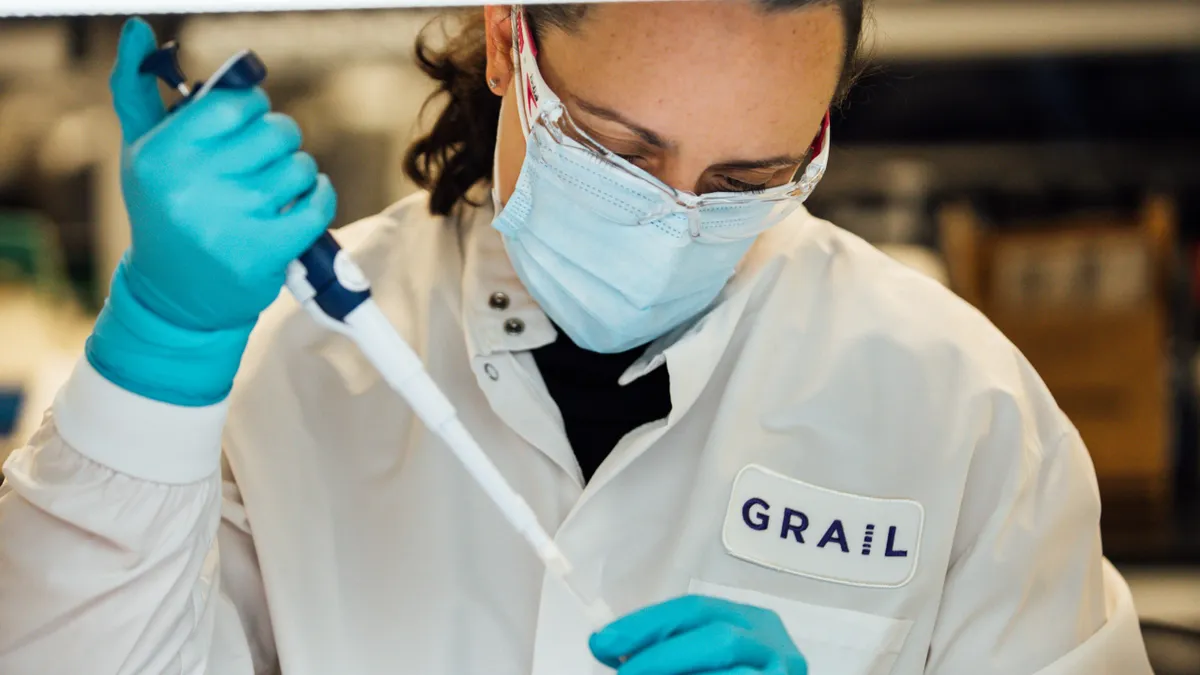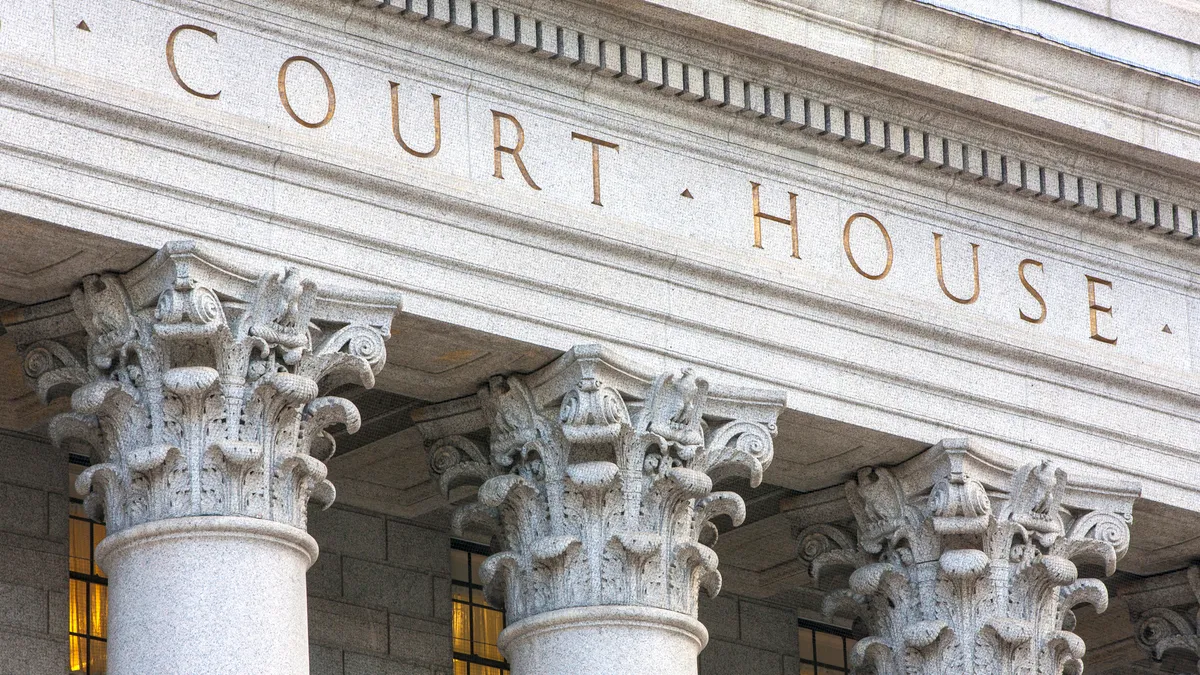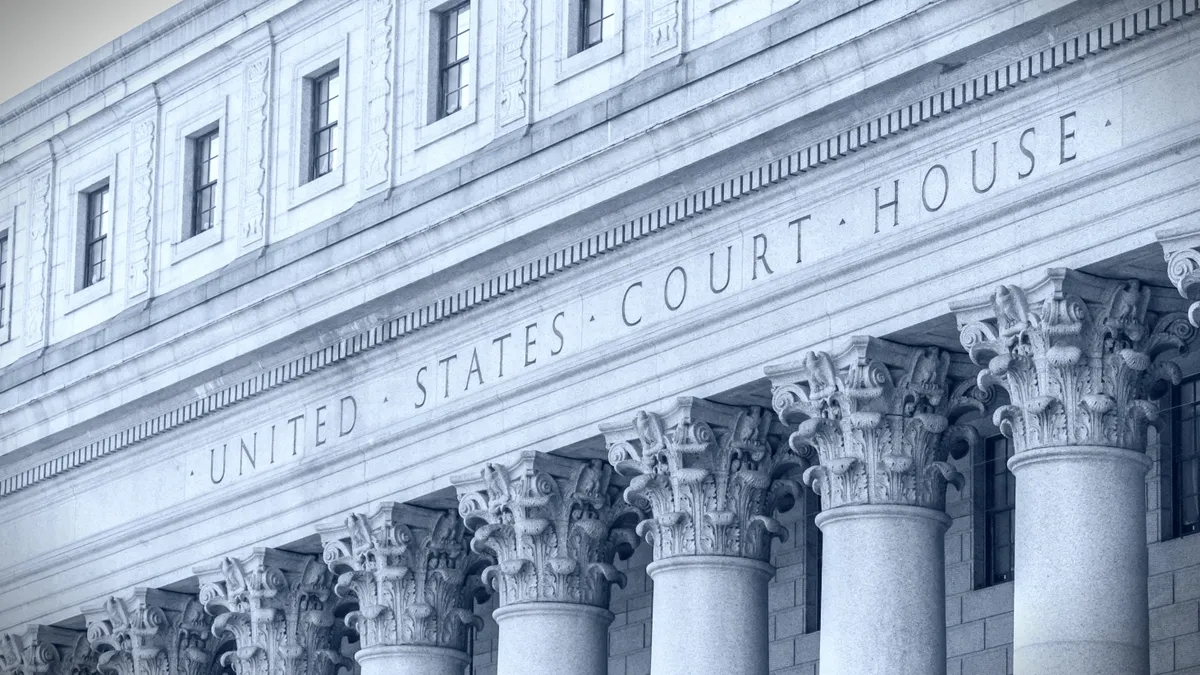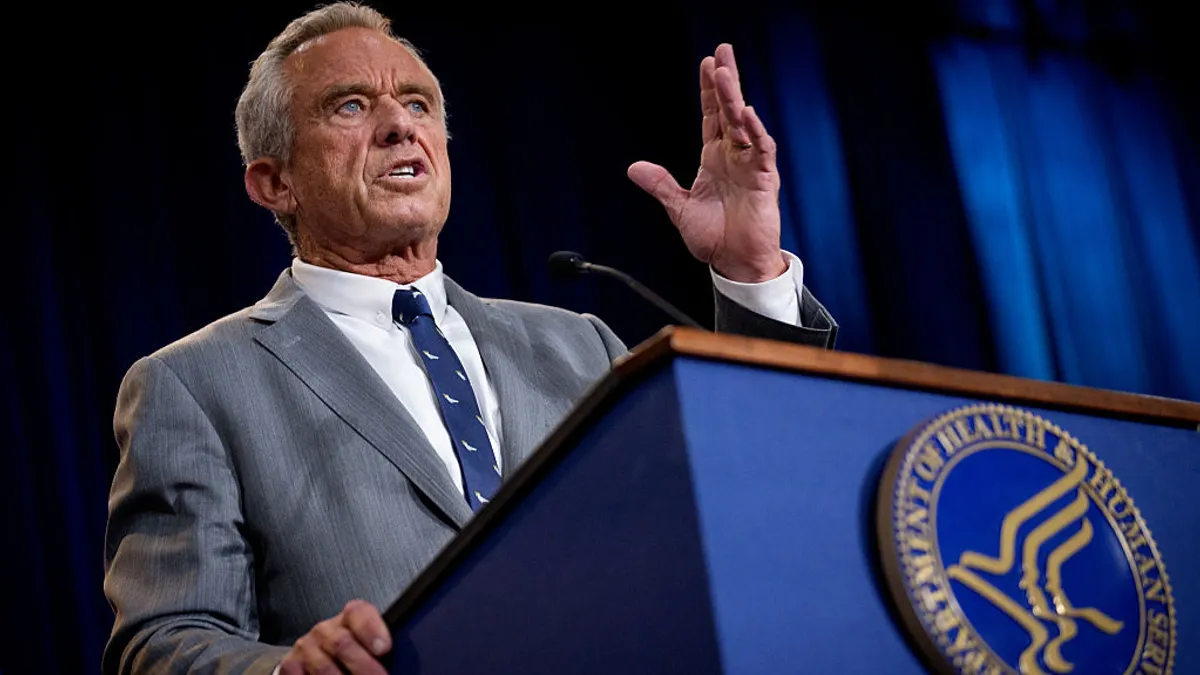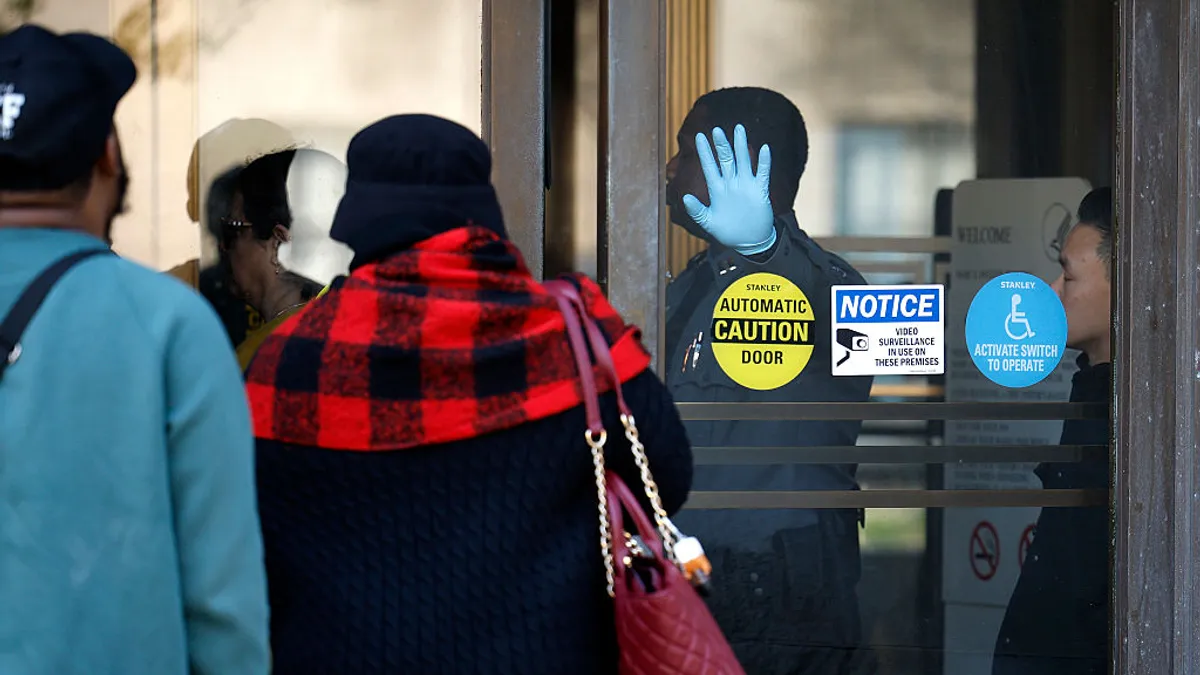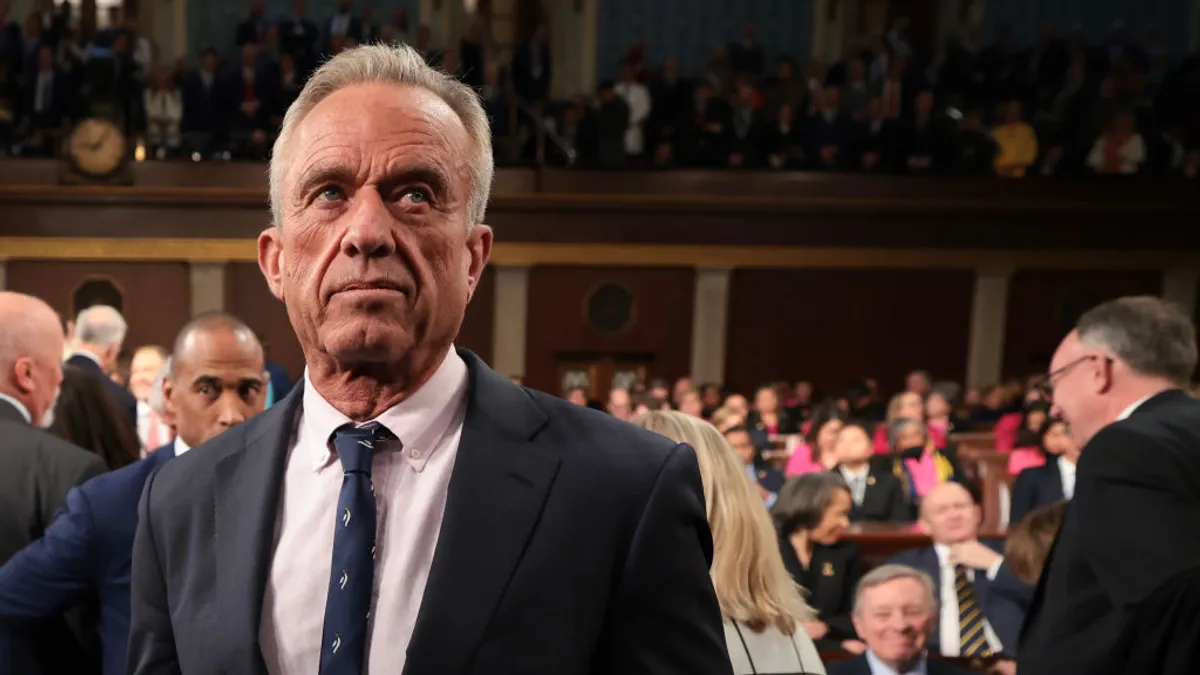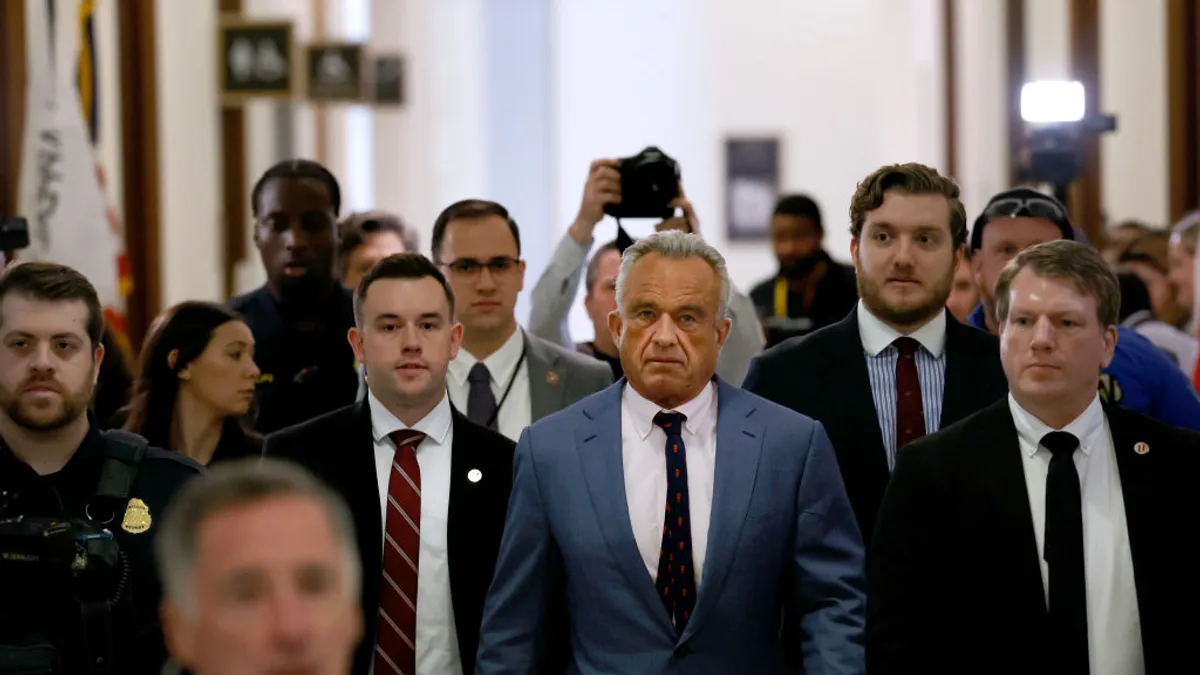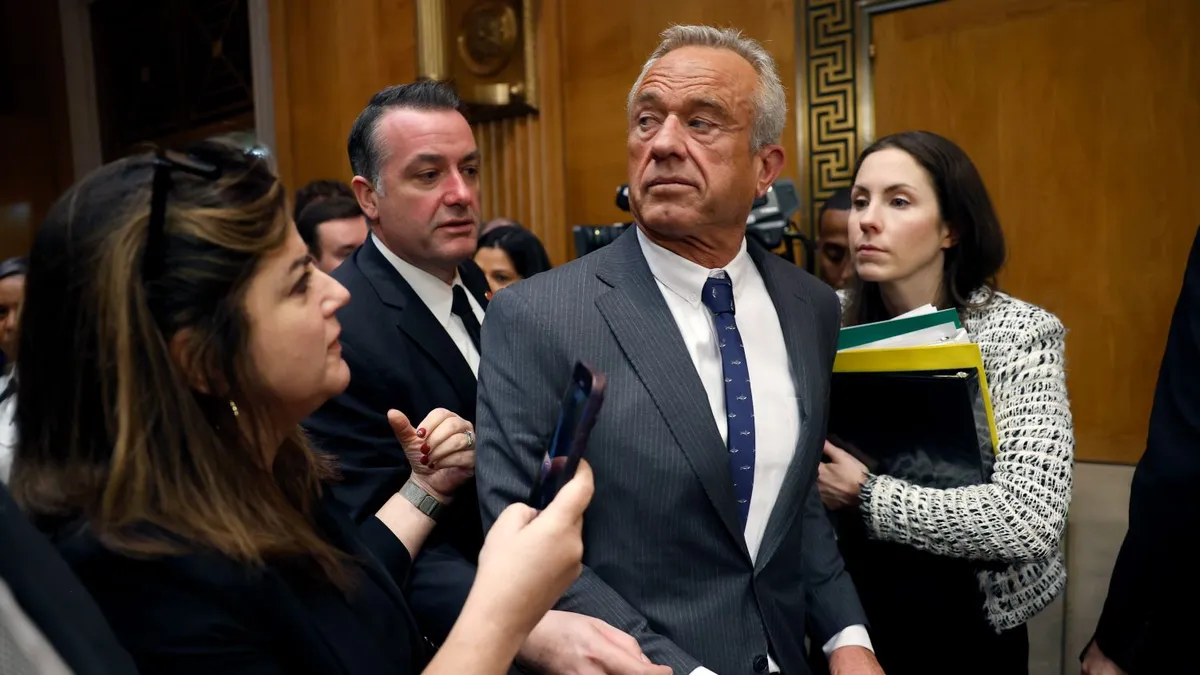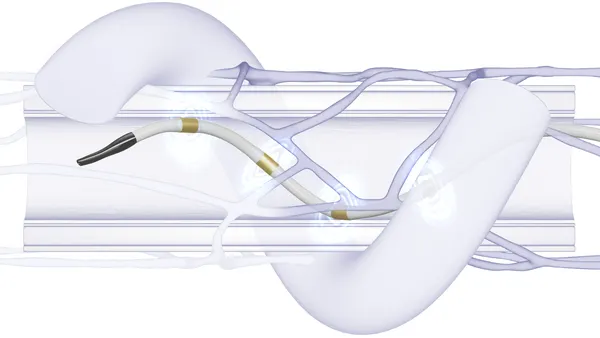A draft budget document shows the Trump administration’s plan to slash funding to the Department of Health and Human Services includes substantial cuts to the Food and Drug Administration.
The preliminary budget sets a total of $2.9 billion in requested congressional appropriations for the FDA, according to Steven Grossman, the former executive director of Alliance for a Stronger FDA, and a copy of the document viewed by MedTech Dive. That would be a roughly 18.6% decrease from $3.6 billion in budget authority the FDA received in its 2024 fiscal year. The 2024 FDA budget also included about $3.3 billion in industry user fees.
The fiscal 2026 budget must be passed by Congress and could look different from the current proposal.
The draft document, which was dated April 10 and labeled “pre-decisional,” appears to come from the Office of Management and Budget. Known in budgetary parlance as a passback, it outlines the Trump administration’s priorities for the agency. The Washington Post first reported on the document’s existence.
User fees, which are collected by the FDA from drug and medical device manufacturers, are expected to continue through the 2026 fiscal year, according to Grossman’s reading of the document. User fees made up nearly 44% of the Center for Devices and Radiological Health’s $791.4 million budget in fiscal 2024. The document claims the preliminary budget would provide “sufficient budget authority levels to meet statutory requirements necessary for FDA to collect medical product user fees in support of its premarket review activities.”
Politico’s Agency IQ reported earlier this month that, due to the Trump administration’s laying off of thousands of staffers, the FDA risked hitting a “trigger,” whereby the FDA could be required to refund industry fees if spending by the agency falls below a certain level.
RBC Capital Markets analyst Brian Abrahams described the impact of the proposed budget cuts as “manageable,” adding that user fees could help bridge the majority of the funding gap.
Grossman disagreed, however, writing in an email that the loss in congressional appropriated funding would be a “direct loss, not offset by the modest, pre-specified increase in user fees.”
The document also proposes no funding for FDA buildings or facilities, or for pay increases, Grossman wrote in an FDA Matters blog post. The FDA would need to absorb any costs for the activities at the proposed budget levels.
Slashing NIH budget
The cuts to the FDA are just one piece of the budget proposal, which looks to slash the HHS’ discretionary spending by one-third. Other proposed cuts across the HHS could also affect drug- and device-makers, such as plans to reduce the National Institutes of Health’s budget by 40%, as reported by the Post.
Abrahams said the proposed NIH cuts could affect early-stage science and grant funding, while plans to shrink or eliminate other programs could reduce patient awareness around mental health conditions, sickle cell disease, cardiovascular and infectious diseases.
The budget cuts follow HHS Secretary Robert F. Kennedy Jr.’s orders to cut the department’s workforce by about 10,000 people in early April. While no official accounting of the layoffs has yet emerged, the reduction-in-force has dismantled entire offices and left others with drastically reduced staff, raising questions about agency functions.
Ultimately, analysts said Congress may provide more funding to the HHS than what is laid out in the president’s budget proposal. The budget requires 60 votes to pass, meaning seven Democratic votes would be needed, TD Cowen analyst Daniel Brennan said in a research note Thursday.
Historically, “NIH has had strong support from both sides of the aisle,” Brennan added, making a 40% cut to the agency seem “extremely unlikely.”


